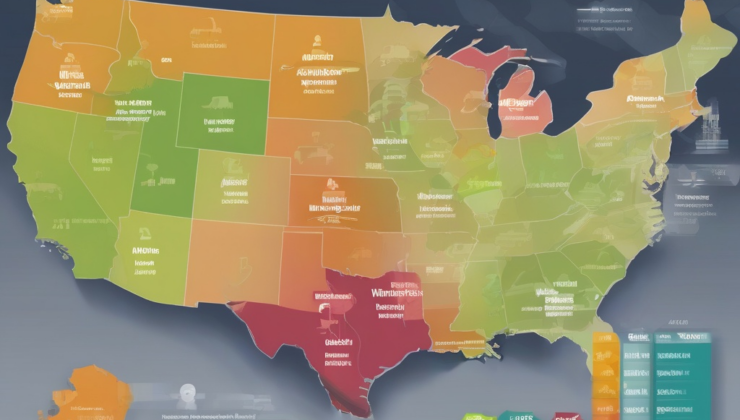

Car insurance is a financial safety net that every driver should have, but it often comes with varying costs. Understanding what influences these costs can help individuals make informed decisions and potentially save money. Below, we delve into the key factors that affect monthly car insurance premiums.
One of the primary determinants of car insurance costs is the driver’s profile. Insurance companies assess risk based on age, driving experience, and history. Younger drivers, especially teenagers, are often deemed high-risk due to their inexperience and thus face higher premiums. Conversely, older drivers with a clean driving record may enjoy lower rates. Additionally, a history of accidents or traffic violations can significantly increase your monthly costs.
Age and Experience: Young drivers usually pay more due to a lack of experience and statistically higher accident rates.
Driving History: A clean record can reduce premiums, while multiple infractions or accidents can raise them.
The type of vehicle you drive plays a crucial role in determining insurance costs. Luxury cars, sports cars, or models with high repair costs often attract higher premiums. Additionally, the intended use of the vehicle—such as personal or business use—can influence rates. Insurers consider factors like mileage and the primary purpose of the car when calculating premiums.
Vehicle Model: Expensive cars or those with high theft rates generally cost more to insure.
Usage: Cars used for business or long commutes may incur higher insurance costs than those used occasionally.
Your location and chosen coverage options are also significant factors in car insurance pricing. Living in urban areas with high traffic density and crime rates can increase your premiums compared to rural areas. Moreover, the level of coverage you choose—whether basic liability or comprehensive coverage—will affect the cost. Comprehensive policies offer more protection but at a higher price.
Geographical Location: High-density or crime-prone areas usually have higher insurance premiums.
Coverage Level: More extensive coverage options, such as comprehensive or collision insurance, come at a higher monthly cost.
Car insurance premiums can vary dramatically from one state to another. These differences are influenced by a multitude of factors, including state regulations, the frequency of natural disasters, and even the average cost of medical care. Understanding these variations is crucial for drivers who are looking to optimize their insurance costs and ensure they get the best coverage for their needs.
Each state has its own set of insurance regulations that dictate the minimum coverage requirements and how insurance companies calculate premiums. For instance, states like New Jersey and Michigan are known for their high insurance rates due to stringent regulatory requirements and no-fault insurance laws. In contrast, states such as Vermont and Maine typically boast lower premiums, attributed to less dense populations and fewer road incidents. Thus, where you live can significantly affect your insurance costs.
In states with higher insurance costs, drivers often face higher minimum liability requirements, contributing to increased premiums. Moreover, states prone to natural disasters, such as Florida with its hurricanes, see insurers raising premiums to cover the potential for high claims payouts.
Another factor that influences car insurance rates across states is the crime rate and traffic density. Urban states with high traffic congestion and crime rates, like California and New York, tend to have higher insurance premiums. The risk of theft, vandalism, and accidents in these areas prompts insurers to charge more to offset potential claims.
Conversely, more rural states or those with lower crime rates, such as Iowa and Idaho, typically offer more affordable car insurance options. The lower likelihood of accidents and vehicle-related crimes allows insurers to provide cheaper rates.
Ultimately, understanding the car insurance landscape across different states can empower consumers to make informed decisions. Whether moving to a new state or reassessing current coverage, knowing the factors that drive state-specific insurance costs is key to securing the best policy.
When it comes to car insurance, the driver’s profile is one of the most critical factors that insurers consider. Just as no two drivers are exactly alike, no two insurance premiums will be the same. Understanding how your personal attributes and driving history affect your insurance costs can empower you to make better financial decisions and potentially lower your premiums.
Insurance companies often view young drivers as high-risk candidates due to their inexperience on the road. This demographic, particularly teenagers and those in their early twenties, tends to face higher insurance premiums. The reasoning is simple: statistical data shows that younger drivers are more likely to be involved in accidents, thus making them a more significant risk for insurers.
On the flip side, mature drivers, particularly those over the age of 25, often see a gradual decrease in premiums as they gain more experience. However, this trend can reverse as drivers enter their senior years. While experience is a plus, advancing age can bring about concerns regarding slower reflexes and potential health issues, which can sometimes lead to increased rates.
Your driving record is a testament to your behavior on the road. Insurers closely examine this history to assess risk levels. A clean driving record, free of accidents and violations, is often rewarded with lower premiums. Insurance companies value drivers who demonstrate responsibility and caution.
Conversely, a history dotted with traffic violations, accidents, or DUI charges can significantly inflate your insurance costs. These elements indicate a higher likelihood of future claims, prompting insurers to adjust premiums accordingly. Some companies offer programs that monitor driving habits in real-time, rewarding safe driving with discounts, while penalizing risky behaviors.
Beyond age and driving history, several other elements of a driver’s profile can influence insurance premiums. These can include:
Understanding the nuances of how your profile affects your car insurance premiums can help you identify areas for improvement. Whether it’s maintaining a clean driving record, understanding the impact of life changes, or seeking insurers that offer programs to monitor and reward safe driving, being informed is your best tool for managing insurance costs.
ENGLİSH
2 gün önceSİGORTA
2 gün önceSİGORTA
2 gün önceSİGORTA
6 gün önceSİGORTA
7 gün önceSİGORTA
7 gün önceDÜNYA
16 gün önce 1
Elon Musk’s Father: “Admiring Putin is Only Natural”
11469 kez okundu
1
Elon Musk’s Father: “Admiring Putin is Only Natural”
11469 kez okundu
 2
Minnesota’s Proposed Lifeline Auto Insurance Program
9399 kez okundu
2
Minnesota’s Proposed Lifeline Auto Insurance Program
9399 kez okundu
 3
Introducing Vivo Y300 Pro+: A Blend of Power and Affordability
7344 kez okundu
3
Introducing Vivo Y300 Pro+: A Blend of Power and Affordability
7344 kez okundu
 4
What’s the best car insurance for seniors?
6000 kez okundu
4
What’s the best car insurance for seniors?
6000 kez okundu
 5
Anticipated Performance Leap: Nvidia’s RTX 5060 Ti 16GB Graphics Card
3227 kez okundu
5
Anticipated Performance Leap: Nvidia’s RTX 5060 Ti 16GB Graphics Card
3227 kez okundu
Veri politikasındaki amaçlarla sınırlı ve mevzuata uygun şekilde çerez konumlandırmaktayız. Detaylar için veri politikamızı inceleyebilirsiniz.